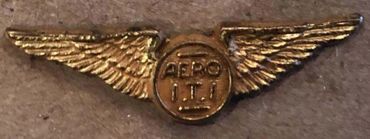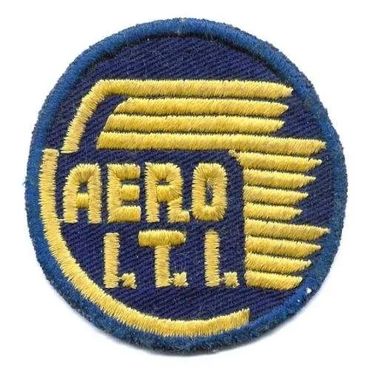1940 VJ-11 "So-Lo" > Worlds First Three Dimensionally Controlled Hang Glider

Number One

1940 VJ-11 "So-Lo"
Worlds First 3 Dimensionally Controlled
Hang Glider.
A bi-wing, this is an original design and build by Volmer Jensen.
Completed in 6 weeks spare time and test flown the following week end

VJ-11B Volmer Aviation
hang-glider, a bi-wing
B for Better.
Photo: Volmer Jensen Flys the VJ-11
FIRST CONTROLLED HANG GLIDER?
Article written by Volmer Jensen and published by the Soaring Society of America, September 1971.

- FIRST CONTROLLED HANG GLIDER? by Volmer S Jensen
- A great deal of interest was shown at the recent Championship hang glider meet (July Soaring). Approximately 15 hang gliders were flown. There was a flight every five minutes — and a "crackup" every five minutes.
- It was absolutely hilarious to watch these gliders go through uncontrolled flight. All were controlled by shifting the body weight which had practically no effect on the attitude of the craft.
- It is easy to understand that shifting a pilot's weight of 150 pounds laterally by six inches is not enough to lower the high wing. This results in the lower wing digging into the ground and ending up in a 180-degree ground loop that faces back up the hill again! I found this out by building two hang gliders 40 years ago.
- Then 30 years ago, during the war when we couldn't fly any aircraft within 150 miles from the coast, I thought it would be fun to build another hang glider. I knew the C.A.A. wouldn't mind since I was only going to slide down the hill. However, I put controls on it, and I believe it is the first hang glider in the world to have three-dimensional controls. Even the Wright Brothers did not have a hang glider; they lay down in their glider to fly.
- I installed elevators and ailerons, controlled by the right hand with a device shaped like a + sign and a rudder by the left hand, using a short rudder bar. It flew great. Many glider pilots tried it including John Robinson, National Soaring Champion for 3 years, and Irv Culver, Lockheed aerodynamicist who helped on the stress analysis, and even fellows with no previous flying experience.
- We could take off in 3 steps down the hill and sometimes land by just bending our knees. On some flights we even gained altitude which I recorded on 16mm. color film.
- As soon as one's feet leave the ground by 12 inches, one feels like he's 1000 feet in the air. This is a very exhilarating experience and a safe sport as evidenced by no injuries of any kind to the contestants at the meet.
- If each glider at this meet had controls, it would have taken off at the top of the hill and flown to the bottom with perfect control.
- We can furnish you with a complete set of blueprints — 8 photographs and full scale rib layout. The cost of materials is approximately $400.00. We do not furnish a kit or materials.
- ...................................................................................................................................
- To facilitate your delivery, please make your payment by cashier's, certified check, or money order.
- IF YOU HAVE ANY MORE QUESTIONS PLEASE SEND A SELF-ADDRESSED AND STAMPED ENVELOPE.
- Please tear off and sign, include with your payment and MAKE A COPY OF THIS AGREEMENT FOR YOURSELF.
1943 VJ-14 "SKYHAWK"

1943 VJ-14 SKYHAWK
2 place training glider
California Aero Glider Co
Specs:
https://www.j2mcl-planeurs.net/dbj2mcl/planeurs-machines/planeur-fiche_0int.php?code=3269
194? - 1945 War Years

194? - 1945 War Years
Volmer spent the war years in the classroom instructing at Aero Industries Technical Institute. He could build anything, such was his expertise,.
Volmers exact title at Aero Industries was "Director of Preflight Training and Glider Construction Program"

The Aero Industries Technical Institute was located in Glendale, CA and was sponsored by Lockheed, Northrop and Consolidated.
Aero Industries was a civilian school under contract to the AAF Technical Training Command during WW2. Main courses of instruction were aircraft repair and depot overhaul.
194? Aero Industries Technical Institute G-2

TG-31
Aero Industries Technical Institute G-2
One TG-31 was impressed with serial 42-57171 on 29 June 1942. It was originally registered as NC19965 and had been owned by Aero Industries.
Built by students of The Glider Constuction Program > Director: Volmer Jensen
In 1942 she went into service at
Twentynine Palms CA
TG-31 - 1942 Aero ITI G-2, 1940 single-seater (N19965), impressed as 42-57171- TG-3
Aero Industries Technical Institute in the early 1940's







1942 VJ-16 "Penguin" Preflight Trainer


Walter Hammond Righter
Designed and made the first five engines (2-S-17) for a Pre-Flight Trainer for Volmer Jensen 'The Penguin' (sic. 'a bird that cannot fly'
Walter Righter Biography
https://www.ctie.monash.edu.au/hargrave/righter.html
Photo: Walter Righter, Ralph "Woody" Woodhouse and Harold "Al" Koester

Article from Air Trails magazine circa 1944 on VJ-16 Pengiun Preflight Trainer
1943 VJ-17 "Penguin" Preflight Classroom Trainer

1943 VJ-17 "Penguin" Preflight Classroom Trainer 1943-1945
California Aero Glider Company

Volmer Jensen, designer of the J-17 classroom trainers which simulate on the ground most flying conditions in the air, explains the controls and operation to Don Wrench, one of the Los Angeles school boysnow being taught the rudamints of flying. Los Angeles is the first of the major cities to teach high school students basic flying by means of stationary planes. The Evening Independant Massill

Print advertisement
July 1945
Lewis Holy Name School of Aeronautics
Albert H. Luke, center, instructor at the Sheil School, advises a student as she operates the controls of pre-flight trainer called the "Penguin" in Chicago, Ill., July, 25, 1945.
[click to enlage]
The penguin gives flight students the basic "feel" of flying without leaving the ground. Luke says that a student is often able to take off in a real plane after finishing the pre-flight penguin training.
Aviation News June 1945
From the June 1945 issue of Aviation News is the following article
"Since opening, the Temple City plant has produced 150 "Penguins"; sold to schools and airport operators, and is in production of an additional 100 at this time.
"With profits from our 'Penguin' production, and furniture manufacturing we should be able to complete the transport glider mockup within a few months.
Actual construction of the prototype should be completed within five months after construction begins,"
Marchetti said. Still on the C.A.G. "stockshelf" are projects for the commercial production of an advanced pre-flight trainer (J- 16) and a gas-powered sport sailplane (J-10).
Several J- 16s were produced and delivered to the Army on an experimental order.
An experimental J-10 is expected to be in flight by the middle of this year.
1945 VJ-19 “SKYWAY EXPRESS”

1945 VJ-19 “SKYWAY EXPRESS”
48-troop/10,000 lb. cargo glider'
Project Proposal
The California Aero Glider Co., Inc
( early ) 1945
Model of Proposed Transport Glider:
Shown are models of California Aero Glider's proposed J-19 transport glider, emphasizing clean lines and construction simplicity. Three jato units under each wing are proposed to facilitate fly-away pick-up.

Quick loading is a feature of the proposed craft with four cargo units as standard equipment. Mounted on cargo platforms they slide into position upon roller tracks on the fuselage floor. Note the single-boom mounting of control surfaces.

California Aero Glider Co., Los Angeles, 48-passenger/10,000 lb. cargo transport:Span, 95 ft., Length, 73 ft.Chords, 15.75 ft. and 5.25 ft.Taper ratio, 3., Aspect ratio, 9.Wing area, 1110 sq. ft.Airfoil, Goettingen 549 modified to increase laminar flow
Specs VJ-19 j2mcl-planeurs.nethttps://www.j2mcl-planeurs.net/dbj2mcl/planeurs-machines/planeur-fiche_0int.php?code=4133Photo: 1945 Publicity sh

Characteristics.Top two speed, 220 mph.Stall, with flaps, 57 mph.Stall, flaps up, 68 mph.Rate of sink with flaps at 85 mph., 1600 ft./min.Minimum landing run, 400 ft.Thrush horsepower per pound of payload at 140 mph., .039

June 1945 issue of Aviation News
Jet Takeoff Planned for Glider Designed to Carry 10,000 Pounds Cal Aero Glider expects completion of
Jet takeoff is planned to make practical a 10,000 lb. payload transport glider designed by California Aero Glider Company of Los Angeles.
Release of military restrictions that have been imposed on the design since January 1944 has resulted in the announcement by A. V. Marchetti, company president, that construction of a civilian prototype is expected to be completed early in 1946.
Marchetti estimates that production models can be sold for $65,000.
byPreliminary specifications indicate that two, and possibly three, fully loaded gliders might be "snatched" and towed successfully by a two-engine tow plane, such as a C-47, C-53, C-46 or Lockheed Lodestar, with the gliders launched and brought to cruising speed by jet assisted takeoff units.
Heretofore the utility of heavy cargo gliders has been minimized by the problem of taking off from reasonably small fields.
Provision has been made, in the design, for installation of three jato units under each wing to enable a 500-ft. takeoff. Contact of the tow plane's snatching hook with the glider tow rope will close a switch firing the jato units.
Plywood construction is proposed by the glider's designer, Volmer Jensen.
A quick-loading feature is the use of four light-weight cargo stowing bins which will be attached to loading boards that will slide into position on roller racks installed on the floor of the fuselage. Locking pins in the racks will secure the cargo containers once they are in position.
Plans for the transport glider (J-19) are from the "future shelf" of California Aero Glider Company, which was cited in AVIATION NEWS of October 18, 1943, as an organization unique in its readiness to "stockshelve" its various projects while maintaining financial independence through enterprises offering immediate returns.
To minimize capital assistance that will be brought into manufacture of the civilian transport glider, which will represent an investment of $150,000, C.A.G. has converted its Los Angeles plant into a furniture factory and has opened a small factory in Temple City, near Los Angeles, for production of its "Penguin" pre-flight trainer.
Since opening, the Temple City plant has produced 150 "Penguins"; sold to schools and airport operators, and is in production of an additional 100 at this time.
"With profits from our 'Penguin' production, and furniture manufacturing we should be able to complete the transport glider mockup within a few months. Actual construction of the prototype should be completed within five months after construction begins,"
Marchetti said. Still on the C.A.G. "stockshelf" are projects for the commercial production of an advanced pre-flight trainer (J- 16) and a gas-powered sport sailplane (J-10). Several J- 16s were produced and delivered to the Army on an experimental order.
An experimental J-10 is expected to be in flight by the middle of this year.
( EDIT: WWII ended September 2, 1945 )
Thanks Stargazer
1946
1946
Volmer Jensen, Burbank CA.
Acquired Jarvis Aircraft Co. assets
Plans and component kits marketed by Herr Engr Corp, Lakeland FL

1947 VJ-21 "Jaybird"

1947 VJ-21 Jaybird
The Volmar VJ-21 'Jaybird', Designed by Volmer Jensen, was an attempt at making an 'affordable' light aircraft, with the flight characteristics of a sailplane.
Photo: VJ-21 and former WASP pilot Barbara Jean Reime 1947

Monowheel gear with outriggers on the wings. Reportedly more than 900 plans sold to builders through the 1960s.
1946
Patent info - VJ-21

Specs VJ-19
California Aero Glider Co., Los Angeles, offers the following data on its proposed 48-passenger/10,000 lb. cargo transport:
Span, 95 ft.
Length, 73 ft.
Chords, 15.75 ft. and 5.25 ft.
Taper ratio, 3.
Aspect ratio, 9.
Wing area, 1110 sq. ft.
Airfoil, Goettingen 549 modified to increase laminar flow characteristics.
Top two speed, 220 mph.
Stall, with flaps, 57 mph.
Stall, flaps up, 68 mph.
Rate of s

Photo:
VJ-21 Jaybird
Popular Science May 1947

ED COATES PHOTO
No. 1174. Volmer VJ-21 Jaybird (N17330 c/n GS32-2)
Photographed at Whiteman Air Park, Los Angeles, California, USA, 1961
Remarks by Ed Coates: "This is the original aircraft designed and built by Volmer Jensen, from which later a kitplane model was developed."
FAA REGISTRY N17330
https://registry.faa.gov/aircraftinquiry/Search/NNumberResult

The only manufactured VJ-21 is on display here at the Wings of History Museum
San Martin CA
